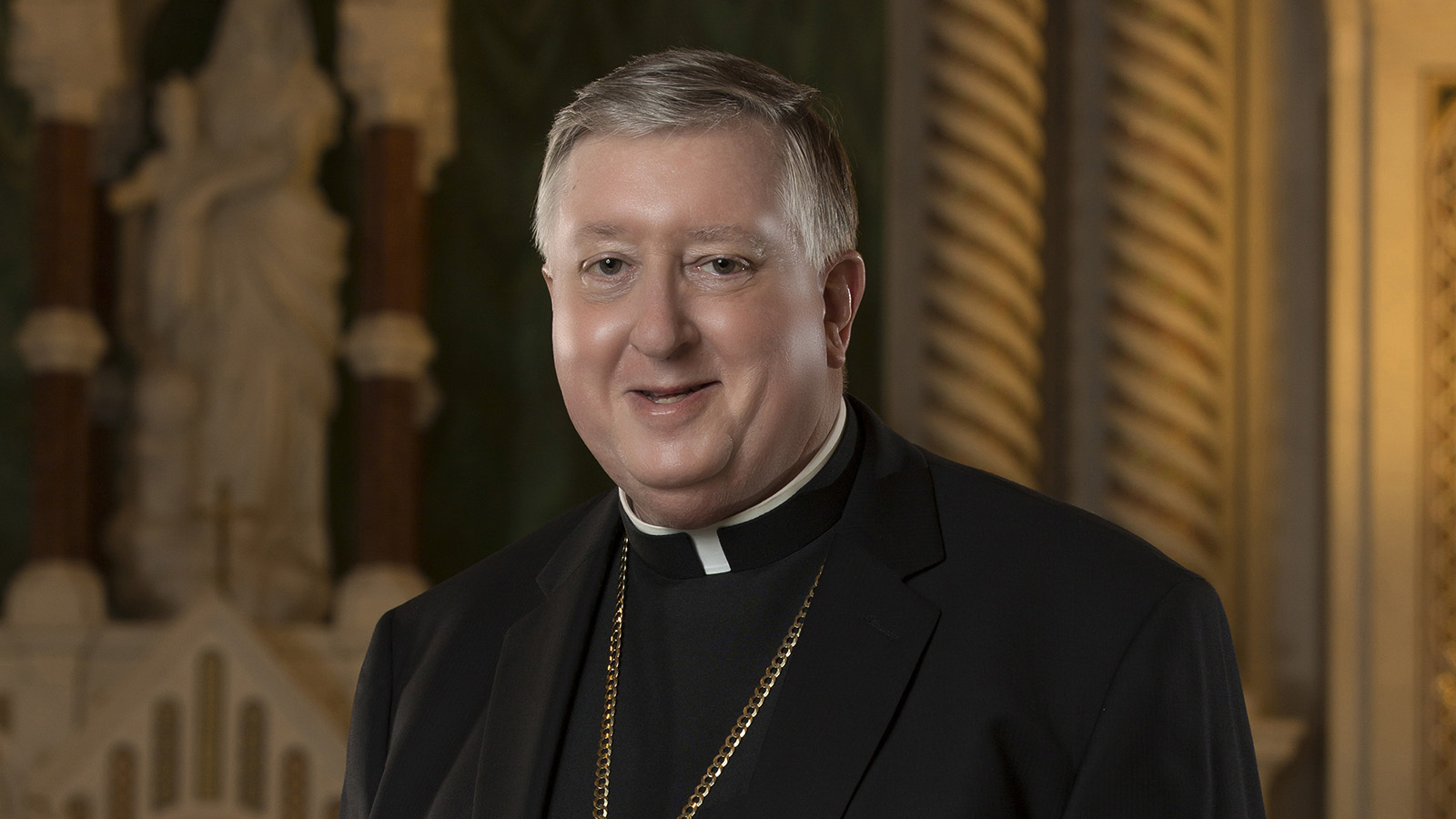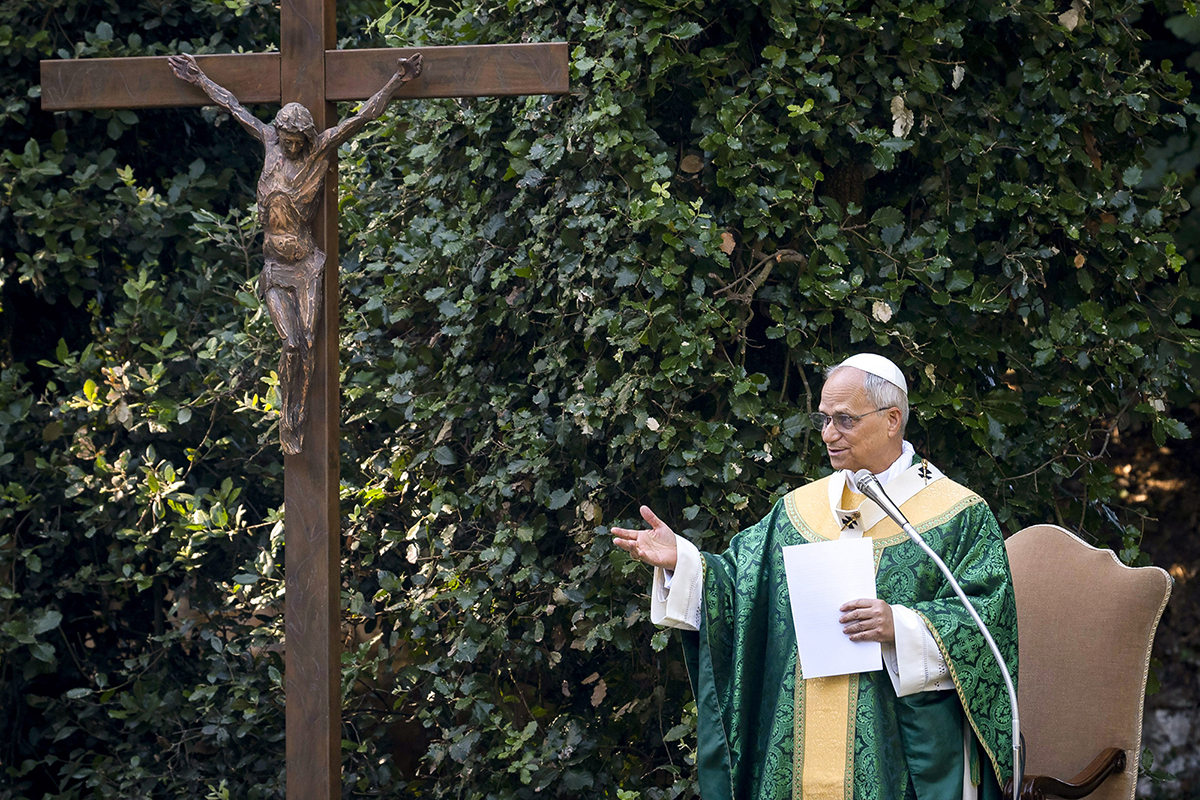SERVE THE LORD WITH GLADNESS | When we give ourselves to God amidst hurt, a rising will follow
The feast of the Triumph of the Cross shows we are meant to follow Jesus in both His downward movement and in His exaltation

Dear brothers and sisters in Christ,
Think of a trampoline.
When we’re hesitant with a trampoline — bouncing on it timidly — we don’t experience all that it’s capable of giving us. When we trust the trampoline, bouncing on it boldly, it can give us great freedom and joy.
The Gospel teaches us that faith works in a similar way. Several things this week focus our attention on the point.
We celebrate the feast of the Triumph of the Cross on Sept. 14. Jesus knew that His self-emptying on the cross would be a kind of trampoline: It would launch Him into the exaltation of the resurrection. So, like a trusting child, He gave Himself fully to the downward movement. Then, just as surely as if it were a spiritual law, His rising followed.
St. Paul describes this twofold movement in Philippians 2: Jesus emptied Himself by becoming human and then emptied Himself again by dying on the cross. This double emptying gave Him a kind of spiritual momentum, and His exaltation followed: “Because of this God greatly exalted Him.”
Sts. Cornelius and Cyprian, whose feast day we celebrate on Sept. 16, believed that we were meant to follow in Jesus’ footsteps, in both His downward movement and in His exaltation. So when they had to sacrifice their lives for their belief in Christ, they gave themselves fully to the downward movement, trusting that the upward movement would follow for them just as it had for Jesus. As we celebrate their feast, we’re reminding ourselves that this is our call, too.
Providentially, we just happen to read the Sermon on the Plain from Luke 6 this week. “Blessed are you who are poor … Blessed are you who are now hungry … Blessed are you who are now weeping … Blessed are you when people hate you on account of the Son of Man.” In every case, Jesus articulates this same law: When you are emptied in the sight of the world, your spiritual exaltation will follow.
To trust in this “spiritual trampoline” fully, however, we need to bear in mind that “the bounce” happens after death. Yes, there are small ways we see both dying and rising in this life. But those are just glimmers of a reality that’s only fully known beyond death. The question is: Will we believe Jesus enough to trust that the “trampoline” He offers us really works?
This is where it’s really helpful to think about the feast day that comes after the Triumph of the Cross: the feast of Our Lady of Sorrows on Sept. 15. Mary stood at the foot of the cross, where the prophecy of Simeon came true: a sword pierced her heart. But she knew how to be at the foot of the cross without losing faith. And so she can coach us, and help us coach others, about how to do the same. It’s OK to experience hurt. That’s part of this life. The question is: Will we give ourselves to God in the midst of the hurt, or will we withdraw from Him because of the hurt?
When we give ourselves to God in the midst of the hurt, we engage the “trampoline” of faith fully — and we know, in faith, what will follow. When we withdraw from Him because of the hurt, we bounce timidly — and we don’t experience the freedom and joy He wants for us.





